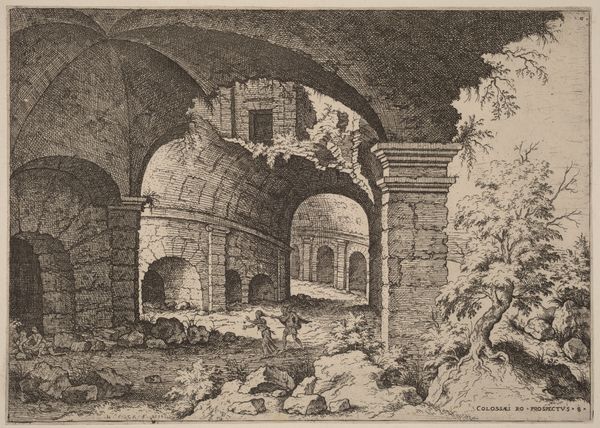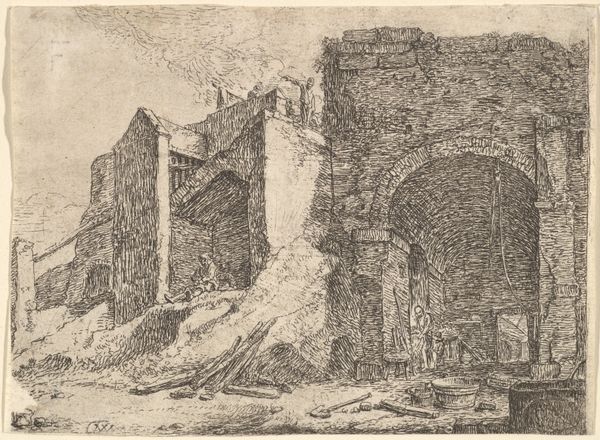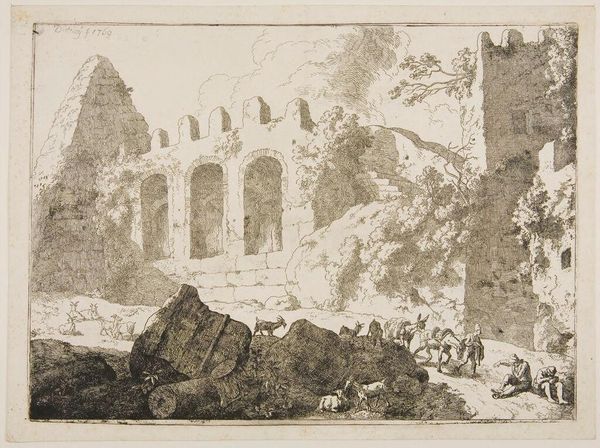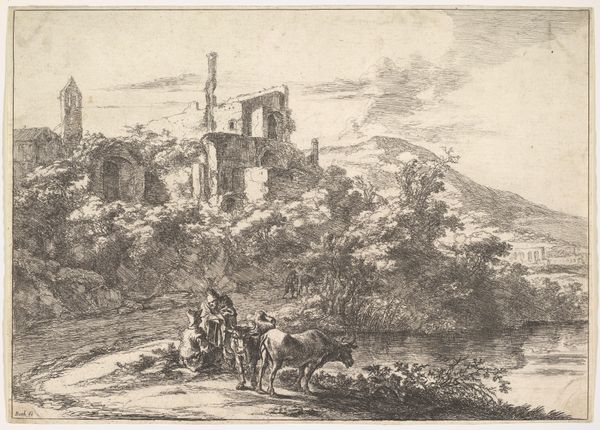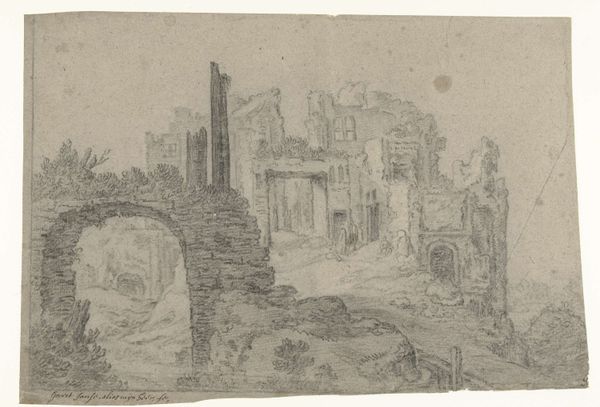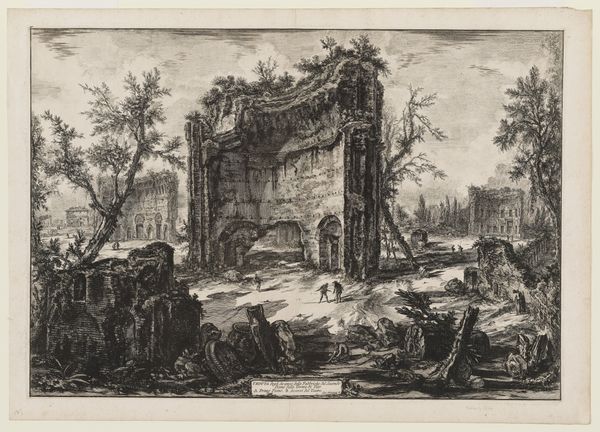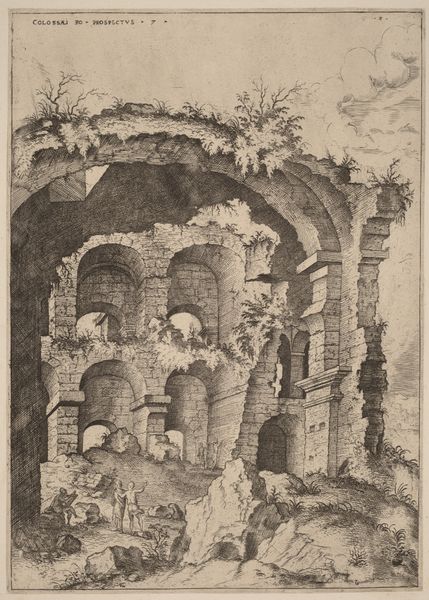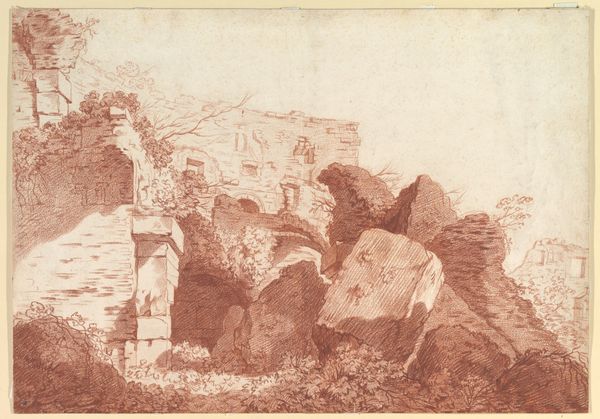
Dimensions: height 258 mm, width 348 mm
Copyright: Rijks Museum: Open Domain
This landscape with ruins and a pyramid was etched by Christian Wilhelm Ernst Dietrich, probably in the 1750s. He made it by incising lines into a metal plate, inking the surface, and then pressing it onto paper. What’s really interesting here is the relationship between the image and its technique. Dietrich was fascinated by the picturesque – that aesthetic ideal of a scene that’s both beautiful and a bit rough around the edges. The etching process, with its sharp lines and contrasting tones, perfectly captures this tension. Look at the way the crumbling stones are rendered, or the gnarled trees. The very act of etching, with its potential for both precision and accidental marks, mirrors the scene itself. Also notice that while etching was one of the more industrial printmaking techniques, it was a medium that was used to portray very idealized scenes. This etching gives us a glimpse into the way materials and making are used to create an aesthetic, and challenge any firm distinction between art and craft.
Comments
No comments
Be the first to comment and join the conversation on the ultimate creative platform.
